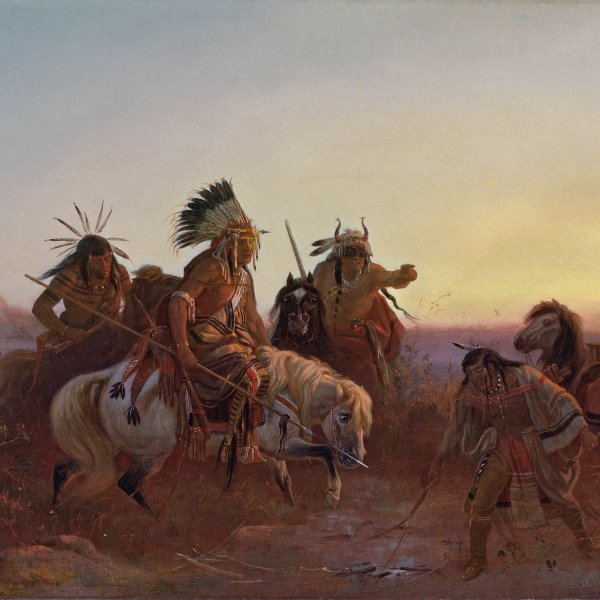Charles Ferdinand Wimar
Siegburg, 1828-Saint Louis, 1862
The painter Charles Ferdinand Wimar, who was devoted to portraying the American Wild West, was born in Germany and went to Saint Louis with his family at the age of fifteen. Saint Louis, then the centre of the American fur trade, witnessed a constant stream of people and objects from the West and exuded a great fascination with everything that came from those distant lands. Wimar began training at the workshop of Leon de Pomarede, a painter of French origin, and helped him execute some of his panoramas depicting scenes of the West. Both his master and the atmosphere of his city of adoption were conducive to Wimar’s decision to devote his oeuvre to this genre.
In 1850Wimar, like other painters of his day, decided to travel to Europe — specifically to Düsseldorf — to round off his training. The German city was one of the most important art centres for American painters of the time, because their countryman and colleague Emanuel Leutze was based there. Wimar soon came into contact with other painters and carved out a place for himself in the local art scene. His fame grew as he was the only artist to portray the American West in Germany, despite the fact that he had almost certainly not yet visited the area and his scenes were based on tales and legends.
Wimar returned to the United States in 1856. It was then that he embarked on a trip along the Missouri River that took him to Yellowstone and at last allowed him to see for himself the customs and traditions of some of the Indian tribes he had depicted in Germany. At the beginning of the 1860s he was commissioned to produce a set of mural paintings for Saint Louis Court House. He died of tuberculosis in 1862, shortly after completing this work.
In 1850Wimar, like other painters of his day, decided to travel to Europe — specifically to Düsseldorf — to round off his training. The German city was one of the most important art centres for American painters of the time, because their countryman and colleague Emanuel Leutze was based there. Wimar soon came into contact with other painters and carved out a place for himself in the local art scene. His fame grew as he was the only artist to portray the American West in Germany, despite the fact that he had almost certainly not yet visited the area and his scenes were based on tales and legends.
Wimar returned to the United States in 1856. It was then that he embarked on a trip along the Missouri River that took him to Yellowstone and at last allowed him to see for himself the customs and traditions of some of the Indian tribes he had depicted in Germany. At the beginning of the 1860s he was commissioned to produce a set of mural paintings for Saint Louis Court House. He died of tuberculosis in 1862, shortly after completing this work.





